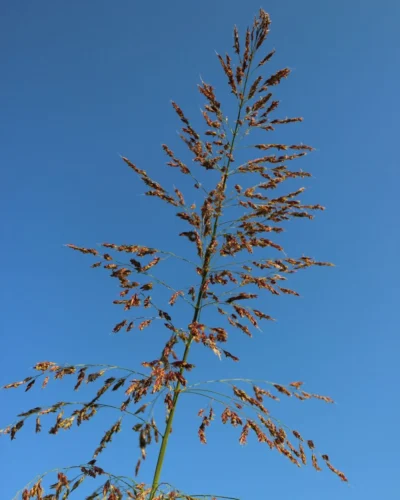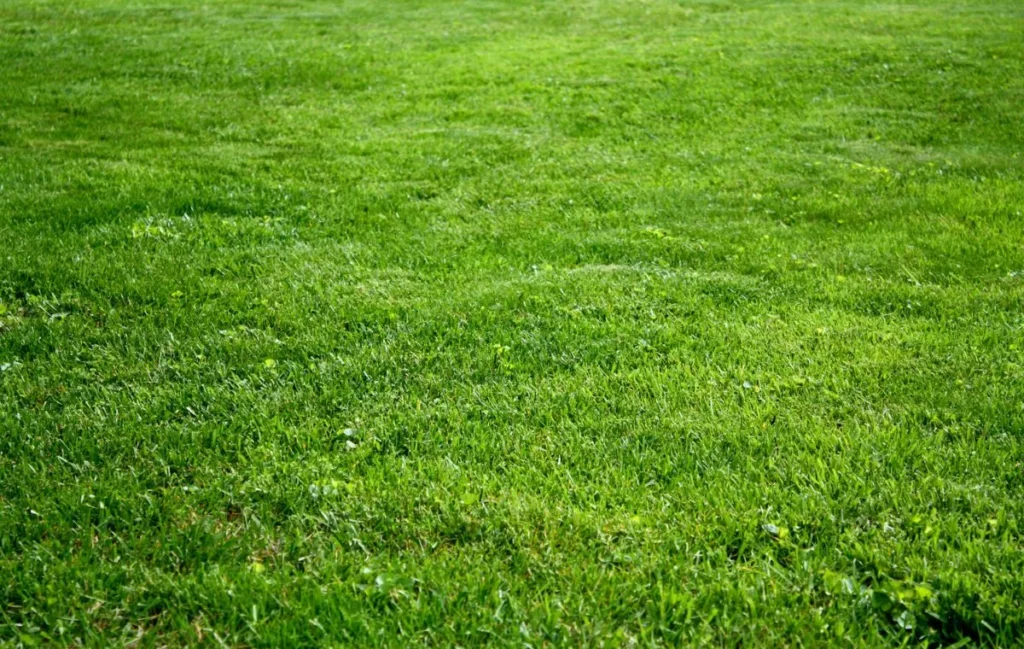Kentucky Blue Grass, scientifically known as Poa pratensis, is a herbaceous species notable for its use as ground cover due to its aesthetic and adaptive qualities. Native to Europe, Asia, and the mountainous regions of North Africa, this perennial grass thrives in cold climates, finding a particular niche in temperate and subtropical regions. Its cold adaptability is a key characteristic of Kentucky Blue Grass, enabling it to prosper where other grasses may not succeed.
Kentucky Blue Grass forms a dense mat of vegetation through its stolons and rhizomes. Stolons are stems that grow horizontally across the soil surface, while rhizomes are underground stems. The rhizome structure of Kentucky Blue Grass is crucial for its self-repair ability in worn or damaged areas, also allowing horizontal growth.
The leaves of Kentucky Blue Grass are thin, flat, with a prominent central vein, and have a distinctive bluish-green color, which earned it its popular name. The boat-shaped leaf tips and narrow grass blades also contribute to its visual identity. The internodes, spaces between leaves along the stem, are short, contributing to its compact and dense appearance. If left to grow naturally, it can reach up to 90 cm (about 35 inches) in height and bloom, producing panicle inflorescences with oval spikelets and purplish flowers in late spring and summer. It’s important to note that Kentucky Blue Grass has a relatively shallow root system, which does not favor it in drought-prone environments.
In landscaping and sports fields, Kentucky Blue Grass is highly valued. Historical records suggest it was one of the first grasses used for landscaping and sports fields in Europe and North America. Its usage is due to its resilience to trampling and quick recovery ability. Additionally, this grass creates a uniform mat, ideal for sports activities. Its fine texture and unique coloration also make it attractive for use in residential gardens, in combination with other ornamental plants.
Compared to other grass species, Kentucky Blue Grass stands out for its durability and lower maintenance needs. While species like Bermuda grass (Cynodon dactylon) require more sunlight, Kentucky Blue Grass can thrive in lightly shaded conditions. However, it may be more susceptible to certain fungal diseases compared to other species, necessitating attention.
There are several cultivars and hybrids of Kentucky Blue Grass, mainly with Poa arachnifera in the United States, which have conferred a greater heat resistance. Some cultivars are developed for greater resilience to different climates, while others are selected for their shade tolerance or disease resistance.
The maintenance of Kentucky Blue Grass, although not overly demanding, requires specific care. It should be mowed regularly to an average height of 2 inches (5 cm), frequently, so that no more than half the leaf height is removed with each cut. Moreover, Kentucky Blue Grass benefits from periodic fertilization to maintain its vibrant color and overall health.

The cultivation requirements of Poa pratensis include full sun exposure and adequate irrigation. Although it tolerates a variety of soil conditions, it grows best in well-drained, slightly alkaline soils. This grass also responds well to periodic soil aeration, which helps alleviate compaction and improves water and nutrient penetration to the roots.
Propagation of Kentucky Blue Grass is generally done through seeds, sod, or plugs. Seeding can be done in spring or early autumn, times when temperature and moisture conditions are more favorable for germination. It’s important to ensure uniform seed distribution and keep the soil lightly moist throughout the germination period. Compared to other grasses, its germination is considered slow, taking 14 to 30 days to complete. Sod installation is another effective technique, quickly covering the area to be grassed, although it has higher costs. Plugs are especially useful for renewing or repairing damaged areas.
Additionally, Kentucky Blue Grass has an interesting physiological peculiarity: its ability to enter dormancy during periods of water stress or high temperatures. This characteristic allows the plant to survive adverse conditions, resuming normal growth when conditions become more favorable.
In terms of diseases and pests, although Kentucky Blue Grass is generally resistant, it can be susceptible to some fungal diseases, such as leaf spot and fusarium, and insects like grubs and beetles. Implementing integrated pest and disease management practices, such as fungicide rotation and maintaining good cultural practices, is important to minimize these issues.
Fertilization is another crucial aspect of Kentucky Blue Grass cultivation. A balanced approach, providing nitrogen, phosphorus, and potassium in adequate amounts, is essential to promote healthy and vigorous growth. Additionally, micronutrients like iron may be necessary to maintain the characteristic bluish-green coloration of the plant.
Regarding irrigation, Kentucky Blue Grass prefers a moderate regime. Although drought-resistant, prolonged periods without water can cause the plant to enter dormancy. Regular watering, especially during the hotter and drier months, will help keep the grass healthy and vibrant.


